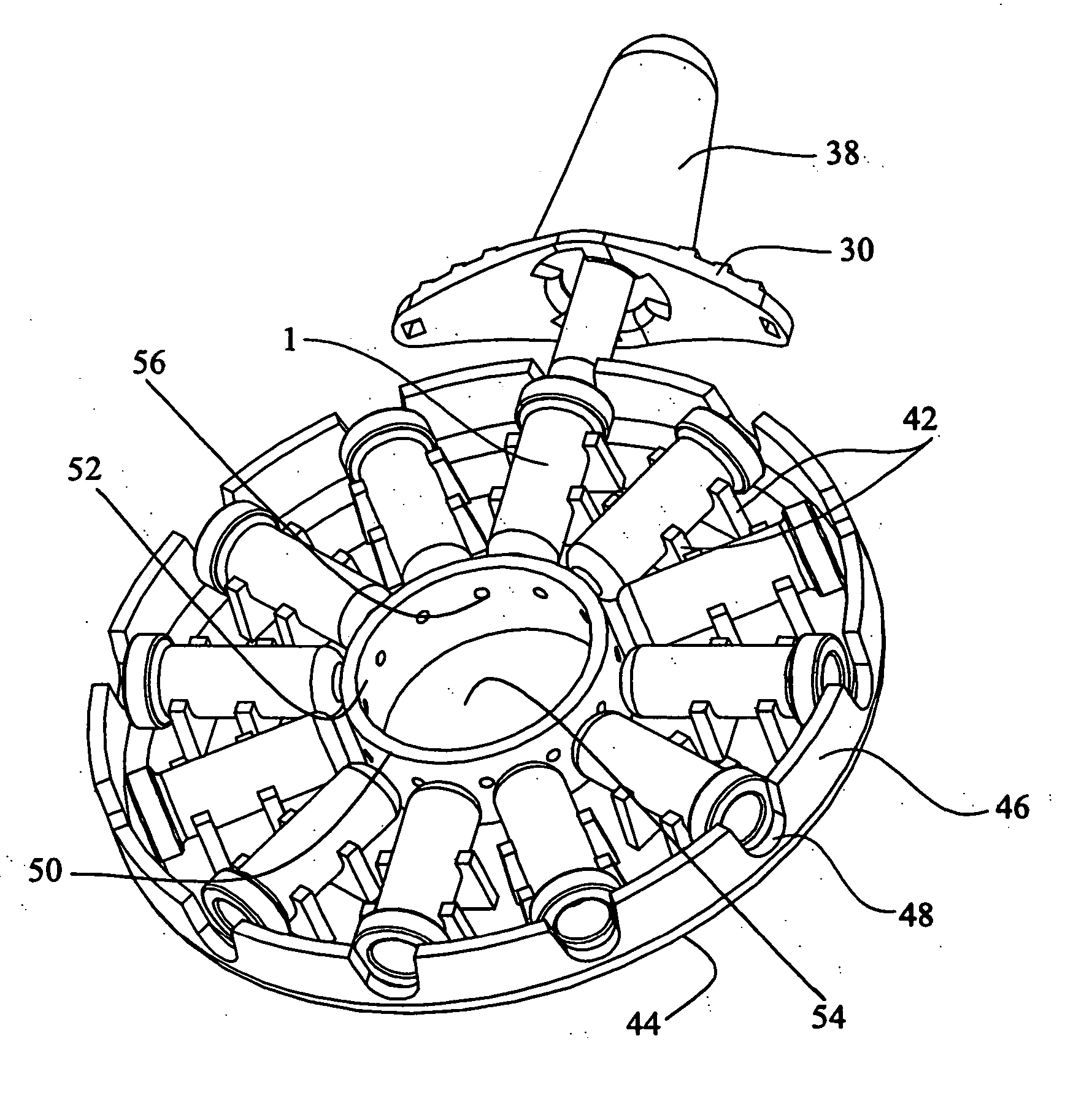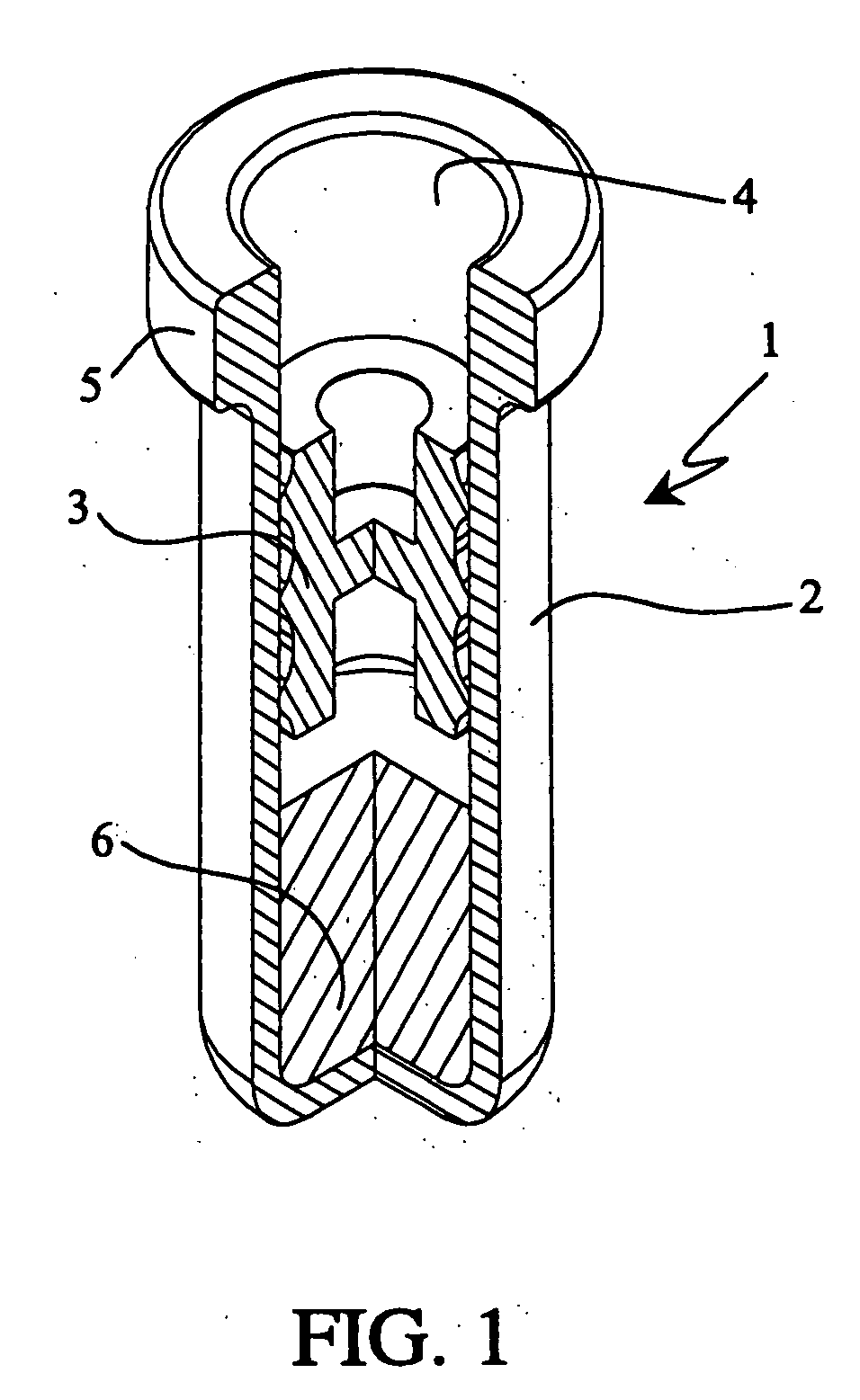Programmable multi-dose intranasal drug delivery service
a drug delivery and multi-dose technology, applied in the direction of single-unit apparatus, transportation and packaging, respirator, etc., can solve the problems of large volume of the programable device and system for self-administration of opioids and other controlled substances, high maintenance cost, and occupying valuable space not only in the patient's room but also in the store room of the health care facility, so as to discourage diversion and abuse.
- Summary
- Abstract
- Description
- Claims
- Application Information
AI Technical Summary
Benefits of technology
Problems solved by technology
Method used
Image
Examples
first embodiment
[0090] In another preferred embodiment which will be described with reference to FIGS. 17, 18 and 19, the pivotally-mounted escapement control arm 120 is actuated by a force resulting indirectly from the passage of an electrical current through a length of nitinol wire 200 or other shape memory alloy (SMA) wire. With reference to a first embodiment illustrated by FIG. 17, a length of nitinol wire 200 is slidably retained in a channel 202 formed by a pair of adjacent walls 204, the free end of wire 200 being fixed to a conductor element 210 which extends below the base plate 44 of support member 40 for a connection to a power source through appropriate circuitry described below.
[0091] The opposite end of SMA wire 200 is joined by connector 220 to a length of flexible braided steel wire 230 preferably having a diameter of about 0.0006 inches, which wire passes freely through a thin-walled plastic tube 226 held by bearing blocks 228. Wire 230 also passes through slide elements 240 that...
second embodiment
[0092] In a second preferred embodiment for the application of an actuating force to the escapement control arm 120, reference is made to FIG. 18 where like reference numbers are used to identify the elements described in detail in FIG. 17. In this second embodiment, the length of the nitinol SMA wire 200 is increased and the steel wire 230 is channeled through tubes to form a pair of vertical loops; however, the method of operation is otherwise the same.
[0093] In the third and most preferred embodiment that is illustrated in FIG. 19, two separate SMA wires 200 are employed and each is preloaded by a compression spring 242, as compared to the use of a single tension spring 232 as was described in the prior two embodiments. In order to actuate the escapement by application of the force F, current is passed through the SMA wire 200 attached to the tip of the control arm 120 that is in restraining contact with projecting stop 132, thereby withdrawing the tip 124 and allowing relative m...
PUM
 Login to View More
Login to View More Abstract
Description
Claims
Application Information
 Login to View More
Login to View More - R&D
- Intellectual Property
- Life Sciences
- Materials
- Tech Scout
- Unparalleled Data Quality
- Higher Quality Content
- 60% Fewer Hallucinations
Browse by: Latest US Patents, China's latest patents, Technical Efficacy Thesaurus, Application Domain, Technology Topic, Popular Technical Reports.
© 2025 PatSnap. All rights reserved.Legal|Privacy policy|Modern Slavery Act Transparency Statement|Sitemap|About US| Contact US: help@patsnap.com



